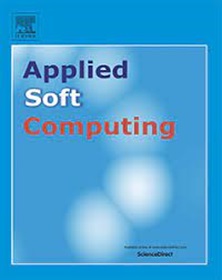Many-to-many: Domain adaptation for water quality prediction
IF 7.2
1区 计算机科学
Q1 COMPUTER SCIENCE, ARTIFICIAL INTELLIGENCE
引用次数: 0
Abstract
Predicting water quality is crucial for sustainable water management. To mitigate data scarcity for specific water quality targets, domain adaptation methods have been employed, adjusting a model to perform in a related domain and leveraging learned knowledge to bridge domain differences. However, these methods often fall short by overfitting certain domain-specific patterns, overlooking consistent water quality patterns in multi-water domains. Despite regional variations, these Consistent patterns show fundamental commonalities and can be observed across monitoring sites, stemming from their widespread and interconnected nature. Addressing these limitations, we introduce the Many-to-Many Domain Adaptation framework (M2M) for prediction to bridge the gap between multi-source domains and multi-target domains, aligning shared insights with the distinct profiles of individual monitoring sites while considering their geographical interconnections. M2M adeptly addresses the formidable challenge of concurrently deciphering and integrating multifaceted patterns across an array of source and target domains, while also navigating the intricate regional heterogeneity intrinsic to the water quality of different sites. The M2M includes a domain pattern fusion module for consistent pattern extraction and numerical scale maintenance from source domains, a domain pattern sharing module for sharing pattern extraction from target domains, and an M2M learning method to ensure the training of these modules. Extensive experiments conducted on 120 diverse monitoring stations demonstrate that M2M markedly enhances the accuracy of water quality predictions using various time series encoders. Code available at https://github.com/biya0105/M2M.
多对多:水质预测的领域适应
预测水质对可持续水资源管理至关重要。为了缓解特定水质目标数据稀缺的问题,人们采用了领域适应方法,调整模型以适应相关领域,并利用所学知识弥合领域差异。然而,这些方法往往由于过度拟合某些特定领域的模式,而忽略了多水域中一致的水质模式。尽管存在区域差异,但这些一致模式显示出基本的共性,并且可以在不同的监测点观察到,这源于它们广泛而相互关联的性质。针对这些局限性,我们引入了多对多领域适应性预测框架(M2M),以弥合多源领域和多目标领域之间的差距,将共同的见解与各个监测点的不同特征相统一,同时考虑到它们之间的地理相互联系。M2M 能够巧妙地应对严峻的挑战,即同时破译和整合一系列源域和目标域的多方面模式,同时还能驾驭不同站点水质固有的错综复杂的区域异质性。M2M 包括一个域模式融合模块,用于从源域进行一致的模式提取和数值标度维护;一个域模式共享模块,用于共享从目标域提取的模式;以及一种 M2M 学习方法,以确保对这些模块进行培训。在 120 个不同监测站进行的广泛实验表明,M2M 能显著提高使用各种时间序列编码器进行水质预测的准确性。代码见 https://github.com/biya0105/M2M。
本文章由计算机程序翻译,如有差异,请以英文原文为准。
求助全文
约1分钟内获得全文
求助全文
来源期刊

Applied Soft Computing
工程技术-计算机:跨学科应用
CiteScore
15.80
自引率
6.90%
发文量
874
审稿时长
10.9 months
期刊介绍:
Applied Soft Computing is an international journal promoting an integrated view of soft computing to solve real life problems.The focus is to publish the highest quality research in application and convergence of the areas of Fuzzy Logic, Neural Networks, Evolutionary Computing, Rough Sets and other similar techniques to address real world complexities.
Applied Soft Computing is a rolling publication: articles are published as soon as the editor-in-chief has accepted them. Therefore, the web site will continuously be updated with new articles and the publication time will be short.
 求助内容:
求助内容: 应助结果提醒方式:
应助结果提醒方式:


